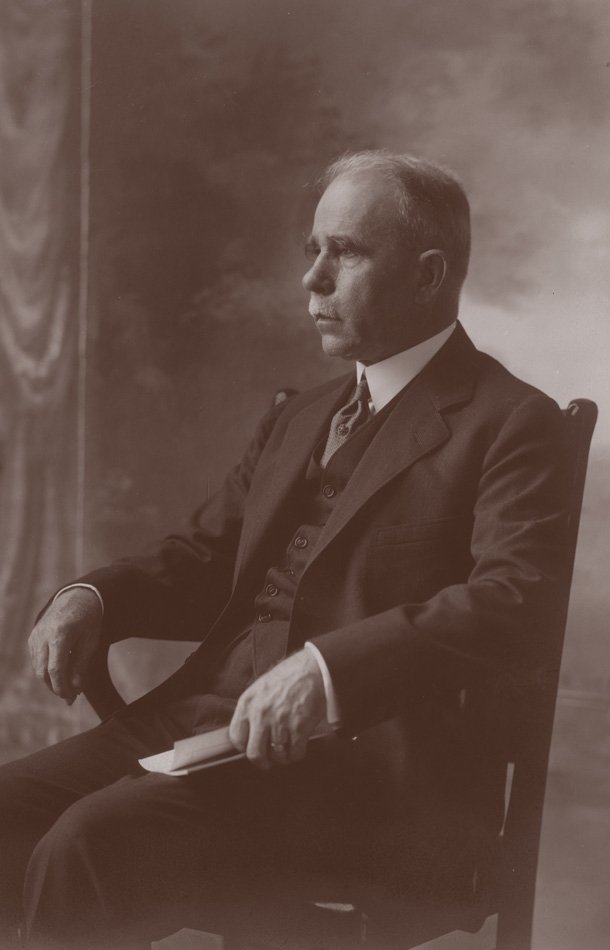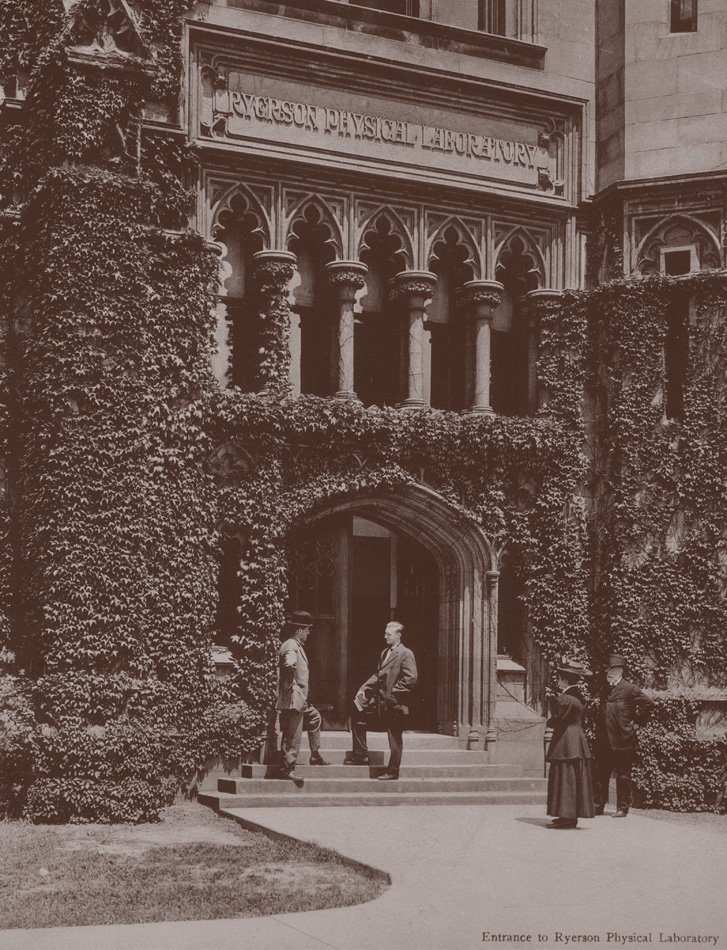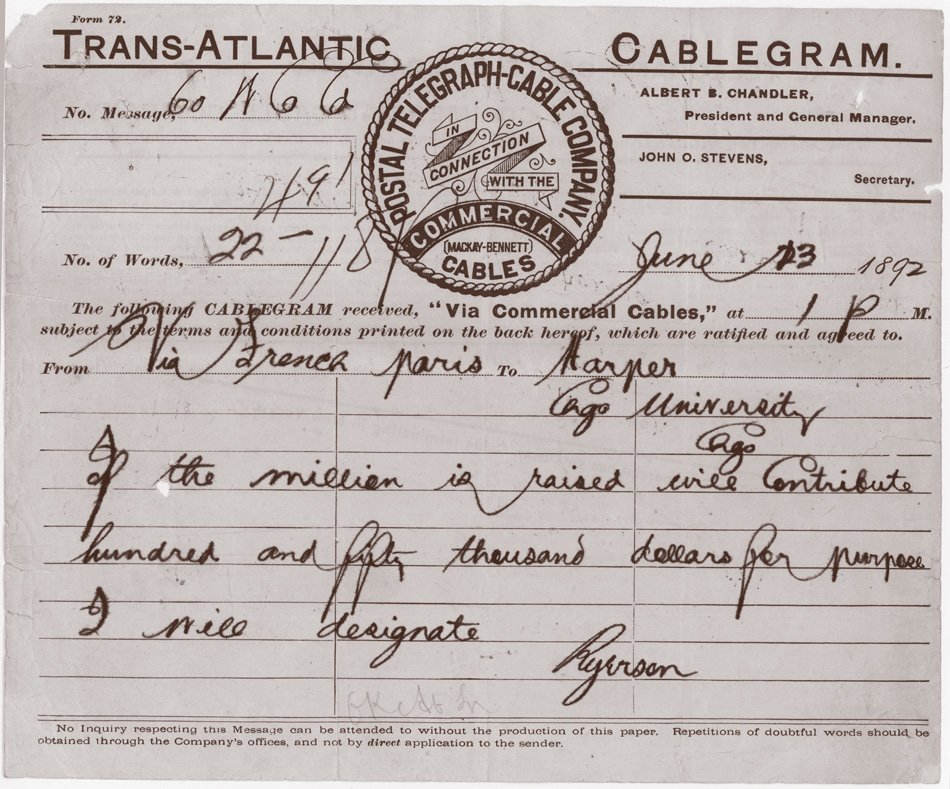Martin A. Ryerson
Like his fellow capitalist George Walker, Martin A. Ryerson (1856-1932) also had long-standing personal connections to the city. His father Martin had moved to Chicago in 1851, where he soon made a fortune in the lumber trade, supplemented by shrewd investments in Chicago real estate, local banks, and the Elgin Watch Company. The younger Ryerson was to become one of the most important civic leaders in the first half century of the University's history, not only because of his extraordinary generosity as a donor, but also because of his distinguished leadership as President of the Board of Trustees from 1892 until 1922. Ryerson's initial appointment to the Board in 1890 proved to be a shrewd political move on the part of the new University's administrative leaders. Ryerson's lack of Baptist affiliation made him the perfect person to attract other non-Baptists to the cause, while his ability to command the respect of Chicago's elite gave him the personal credentials to serve as a key spokesman for the University.
Supported by his good friend and fellow Trustee Charles L. Hutchinson, Ryerson as President of the Board dealt admirably with an array of perplexing challenges, including the constant annual budget deficits run up by President William Rainey Harper. Calm, unflappable, patrician in his bearing, and having an unusually refined level of aesthetic sensibility, Ryerson easily reconciled his dual roles as administrative leader and major donor, while playing a decisive role in the planning of the campus and in defending its remarkable architectural unity and integrity.
Ryerson was educated in a fashion befitting his father's wealth, attending private schools in Paris and Geneva and graduating from Harvard Law School in 1878. After his father's unexpected death in 1887, when he was thirty-four, Ryerson became his father's sole heir and was free to devote much of his time to the establishment of the University of Chicago. Indeed, by the early 1890s, Ryerson retired from active business altogether in order to dedicate himself fully to his various philanthropic interests and his passion for art collecting. Martin Ryerson also shared his administrative talents and fortune with several of Chicago's other noteworthy cultural institutions. A trustee of the Art Institute of Chicago since 1890, Ryerson's knowledge of art was on the level of a connoisseur, and upon his death in 1932 the Art Institute was bequeathed a breathtaking collection of French Impressionists—including five paintings by Renoir and sixteen paintings by Monet—and an extraordinary group of Old Master paintings as well, all of which originally hung in the Ryerson mansion at 4851 South Drexel Boulevard. In 1894 Ryerson was also appointed Vice President of the Field Columbian Museum, where he succeeded in rescuing a number of exhibits left after the World's Columbian Exposition closed in 1892.
Ryerson's financial gifts to the University were extensions of his work as a University Trustee and his life as a cultural philanthropist. Perhaps his most significant gift was $350,000 toward the construction and subsequent renovation of the Ryerson Physical Laboratory. He also played a key role in creating the new University's Library, for Ryerson was the primary figure in President Harper's successful campaign to acquire the Berlin Collection in 1891, providing almost half of the money that was secured to purchase the collection. Overnight this collection transformed the University's fledgling library into a major research collection, giving Chicago the second largest university library collection in the United States by 1896. Ryerson's interest in rare books and manuscripts found continued expression in his support for the acquisition of the famous Sir Nicholas Bacon Collection of early English manuscripts in 1924 and his funding the purchase of a mid-fifteenth-century codex (the "McCormick Manuscript") of Chaucer's Canterbury Tales in 1930, both acquired on the basis of personal interventions with Ryerson by Professor John Matthews Manly of the Department of English.
When John D. Rockefeller offered a major pledge in 1906 to build the Harper Memorial Library, Ryerson also promised $25,000 to the same cause. To these gifts Ryerson added a major endowment to create the Martin A. Ryerson Distinguished Service Professorship in 1925. At the time of his death in 1932, Martin A. Ryerson's total contributions to the University of Chicago exceeded $2 million, not including part of a $6-million-dollar bequest that was evenly divided among the Art Institute, the Field Museum of Natural History, and the University of Chicago.University President's Papers, 1889-1925



